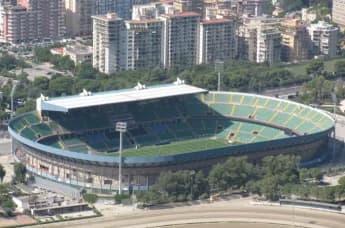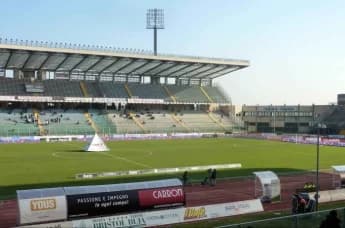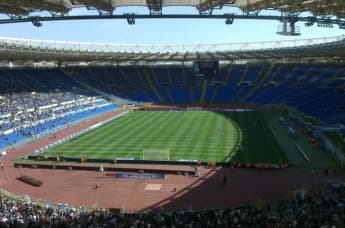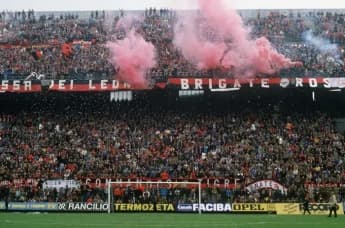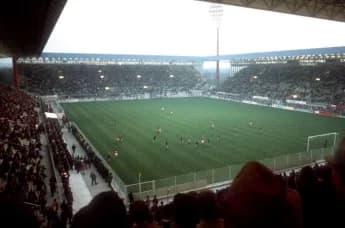Estadio da Luz, known as “A Catedral,” was not just a stadium but a symbol of Portuguese pride, hosting legendary matches and fostering a passion for football for decades.
Estádio da Luz, officially referred to as Estádio do Sport Lisboa e Benfica, transcended the role of a mere football stadium; it became a representation of Portuguese pride and sporting brilliance. Situated in Lisbon, it was the home ground for S.L. Benfica and the Portugal national football team from its opening on December 1, 1954, until its closure in 2003. Its magnificence was unparalleled, holding a maximum capacity of 120,000, which made it the largest stadium in Europe and the third-largest in the world at the height of its glory.
Constructed through the united efforts and contributions of Benfica’s fans, Estádio da Luz gained the affectionate nickname “A Catedral” (The Cathedral) due to its profound meaning for football enthusiasts. The stadium's remarkable architecture and impressive capacity made it an essential destination for football lovers worldwide, solidifying its role in the cultural and sporting fabric of Lisbon.
Memorable Matches
Throughout its remarkable history, Estádio da Luz was the venue for some of the most unforgettable matches in football. The championship game in 1987 between Benfica and FC Porto marked a pivotal moment, attracting an estimated attendance of 140,000—the largest crowd in the stadium’s history. Another landmark occasion was the 1991 FIFA World Youth Championship final between Portugal and Brazil, which witnessed an enthusiastic turnout of 127,000 fans passionately supporting their teams.
The stadium also served as a host for various international tournaments and European competitions. It was the venue for the second leg of the 1983 UEFA Cup Final, the 1992 European Cup Winners' Cup Final, and many European Cup matches, including Benfica's semi-final clash with Olympique de Marseille in 1990. Each of these events contributed to the stadium's illustrious reputation, establishing it as a fundamental part of football history.
Attributes & Amenities
The Estádio da Luz was an impressive feat of engineering and architectural design. Its three-tier design provided a comprehensive view for every spectator, with the completion of the third tier in 1985 expanding its seating capacity to an incredible 120,000. Additionally, the stadium installed floodlights in 1958, enabling exhilarating evening matches that fostered a distinct and lively atmosphere.
In 1994, the stadium underwent major renovations to meet contemporary safety regulations, converting it to an all-seater format. This change reduced the seating capacity to 78,000 while improving comfort and safety for spectators. The addition of modern facilities, such as spacious locker rooms, state-of-the-art scoreboards, and accessible amenities, made it a more welcoming venue for fans.
Significance in History
Estádio da Luz represented more than just a sports venue; it stood as a symbol of the glory of Portuguese football. Built during a time marked by growth and ambition for Benfica, it became emblematic of the club's supremacy, hosting countless domestic and international victories. Furthermore, it played a crucial role in advancing Portuguese football, providing a platform for iconic players and unforgettable moments.
The legacy of the stadium goes beyond just Benfica. It was a national landmark, hosting international matches for Portugal and creating a profound bond between the sport and its supporters. Its iconic stature in Lisbon became a point of pride for the city, and its rich history continues to resonate in the hearts of football fans around the globe.
Upcoming Attractions
Despite the demolition of Estádio da Luz in 2003, its legacy lives on in the 'Nova Catedral,' the newly constructed Estádio da Luz located nearby. This contemporary facility serves as the new home for Benfica and continues to host significant events, including matches in the Portuguese league and UEFA competitions. Upcoming attractions include games that highlight Benfica's pursuit of success in both domestic and European arenas. The new stadium honors the legacy of its forerunner by providing cutting-edge facilities while preserving the emotional bond that fans share with the legendary location. It stands as a symbol of the lasting significance of football within Portuguese culture.
Spectator Experience
Attending a match at Estádio da Luz was truly an enchanting experience. The vibrant crowds, coordinated chants, and electric atmosphere created a fervent football environment. Supporters from diverse backgrounds came together to witness unforgettable moments, united by their passion for the sport. The design of the stadium provided exceptional sightlines, while its famous third tier gave fans an elevated view of the exciting action on the pitch.
In its later years, enhancements such as upgraded seating and improved concession areas enriched the matchday experience. The atmosphere during a home game for Benfica, known as 'O Inferno da Luz' (The Hell of Light), was unparalleled, as fans generated a tremendous blend of noise and color that motivated players and astounded visiting teams.
Estádio da Luz, officially referred to as Estádio do Sport Lisboa e Benfica, transcended the role of a mere football stadium; it became a representation of Portuguese pride and sporting brilliance. Situated in Lisbon, it was the home ground for S.L. Benfica and the Portugal national football team from its opening on December 1, 1954, until its closure in 2003. Its magnificence was unparalleled, holding a maximum capacity of 120,000, which made it the largest stadium in Europe and the third-largest in the world at the height of its glory.
Constructed through the united efforts and contributions of Benfica’s fans, Estádio da Luz gained the affectionate nickname “A Catedral” (The Cathedral) due to its profound meaning for football enthusiasts. The stadium's remarkable architecture and impressive capacity made it an essential destination for football lovers worldwide, solidifying its role in the cultural and sporting fabric of Lisbon.
Memorable Matches
Throughout its remarkable history, Estádio da Luz was the venue for some of the most unforgettable matches in football. The championship game in 1987 between Benfica and FC Porto marked a pivotal moment, attracting an estimated attendance of 140,000—the largest crowd in the stadium’s history. Another landmark occasion was the 1991 FIFA World Youth Championship final between Portugal and Brazil, which witnessed an enthusiastic turnout of 127,000 fans passionately supporting their teams.
The stadium also served as a host for various international tournaments and European competitions. It was the venue for the second leg of the 1983 UEFA Cup Final, the 1992 European Cup Winners' Cup Final, and many European Cup matches, including Benfica's semi-final clash with Olympique de Marseille in 1990. Each of these events contributed to the stadium's illustrious reputation, establishing it as a fundamental part of football history.
Attributes & Amenities
The Estádio da Luz was an impressive feat of engineering and architectural design. Its three-tier design provided a comprehensive view for every spectator, with the completion of the third tier in 1985 expanding its seating capacity to an incredible 120,000. Additionally, the stadium installed floodlights in 1958, enabling exhilarating evening matches that fostered a distinct and lively atmosphere.
In 1994, the stadium underwent major renovations to meet contemporary safety regulations, converting it to an all-seater format. This change reduced the seating capacity to 78,000 while improving comfort and safety for spectators. The addition of modern facilities, such as spacious locker rooms, state-of-the-art scoreboards, and accessible amenities, made it a more welcoming venue for fans.
Significance in History
Estádio da Luz represented more than just a sports venue; it stood as a symbol of the glory of Portuguese football. Built during a time marked by growth and ambition for Benfica, it became emblematic of the club's supremacy, hosting countless domestic and international victories. Furthermore, it played a crucial role in advancing Portuguese football, providing a platform for iconic players and unforgettable moments.
The legacy of the stadium goes beyond just Benfica. It was a national landmark, hosting international matches for Portugal and creating a profound bond between the sport and its supporters. Its iconic stature in Lisbon became a point of pride for the city, and its rich history continues to resonate in the hearts of football fans around the globe.
Upcoming Attractions
Despite the demolition of Estádio da Luz in 2003, its legacy lives on in the 'Nova Catedral,' the newly constructed Estádio da Luz located nearby. This contemporary facility serves as the new home for Benfica and continues to host significant events, including matches in the Portuguese league and UEFA competitions. Upcoming attractions include games that highlight Benfica's pursuit of success in both domestic and European arenas. The new stadium honors the legacy of its forerunner by providing cutting-edge facilities while preserving the emotional bond that fans share with the legendary location. It stands as a symbol of the lasting significance of football within Portuguese culture.
Spectator Experience
Attending a match at Estádio da Luz was truly an enchanting experience. The vibrant crowds, coordinated chants, and electric atmosphere created a fervent football environment. Supporters from diverse backgrounds came together to witness unforgettable moments, united by their passion for the sport. The design of the stadium provided exceptional sightlines, while its famous third tier gave fans an elevated view of the exciting action on the pitch.
In its later years, enhancements such as upgraded seating and improved concession areas enriched the matchday experience. The atmosphere during a home game for Benfica, known as 'O Inferno da Luz' (The Hell of Light), was unparalleled, as fans generated a tremendous blend of noise and color that motivated players and astounded visiting teams.


